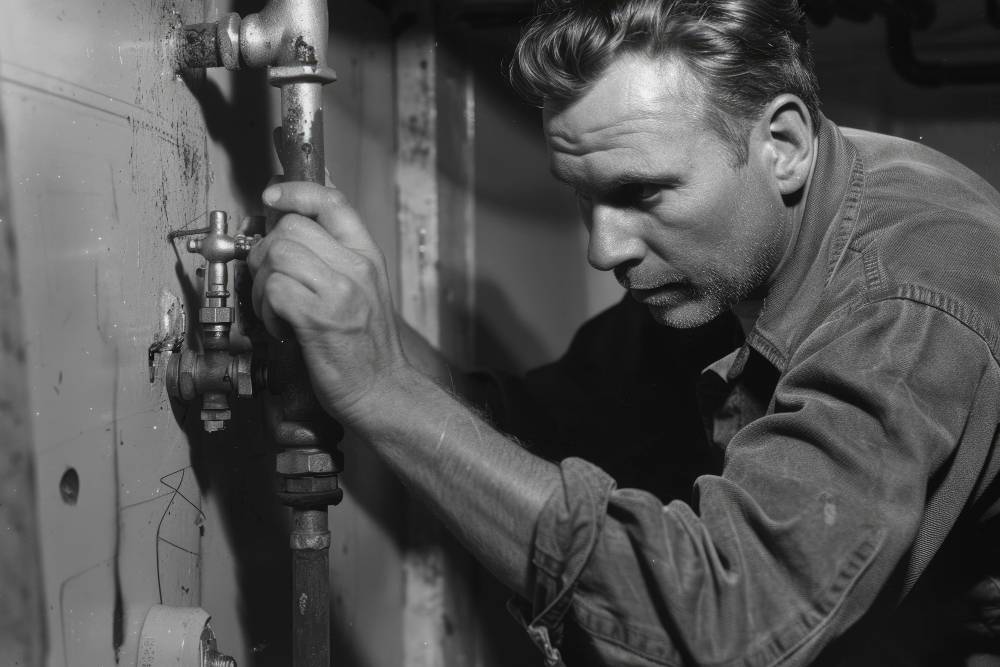Menu
Call This Saturday to Get $50 Off
Do You Need a Plumber in Dallas, TX? Call us Now to Get $50 OFF
4.8 / 5 Ratings based on 1384 reviews Great Plumbers, Great Reviews
Call This Saturday to Get $50 Off
When you open a water tap to fill a glass with water or flush a toilet, there’s a good chance you don’t think about how your plumbing got to be where it is today. Indoor plumbing is something many of us take for granted but has an interesting history behind it.

At Mr. Rooter Plumbing, we take great pride in offering top-of-the-line plumbing services backed by a satisfaction guarantee. If you’re looking for a knowledgeable and experienced plumber who can deliver top-quality services, we are one phone call away. From piping to sump pumps and garbage disposals, we’ve got you covered.
In this article, you’ll learn some interesting facts about indoor plumbing that you may not have known.
Archaeologists uncovered water pipes in a river in India that are believed to be the first evidence of the roots of indoor plumbing as we know it today. These early pipes were made of fired clay and were used to drain wastewater and rainwater.
Before that, most people used outhouses or chamber pots. It wasn't until the development of cast iron pipes and improved sanitation systems that indoor plumbing became more widespread.
The widespread adoption of indoor plumbing hinged on the creation of municipal sewer systems. Prior to the 20th century, waste disposal remained a major challenge in densely populated areas. The development of effective sanitation systems in conjunction with cast iron pipes finally paved the way for indoor plumbing to become a standard feature in most homes by the mid-20th century.
Harington, an Elizabethan courtier and godson to Queen Elizabeth I, designed an elaborate contraption with a valve system and a flush tank. He even installed his invention in a royal residence and impressed the queen with its novelty. However, his invention was not widely adopted, and it wasn't until the 18th century that flushing toilets began to be used more regularly.
Before that, people used a variety of unconventional and often unsanitary methods for personal hygiene. Leaves, rags, sponges, and even seashells were all employed at different times and places throughout history. The Romans, for example, used a stick with a sponge attached, which they then rinsed in a basin of water. In medieval Europe, rushes (reeds) were a common choice. Thankfully, Joseph Gayetty, an American entrepreneur, introduced the world's first commercially available toilet paper in 1857, forever changing bathroom habits.
The Romans built massive aqueducts that brought water to their cities, and they also developed a sophisticated sewer system. The Egyptians were also pioneers in plumbing, and they even had indoor toilets in some of their palaces. These early civilizations laid the groundwork for future advancements in sanitation and plumbing. They paved the way for the conveniences we take for granted today.
Now that you know the interesting facts about the history of plumbing, it’s important to know who to turn to when you need plumbing help. Mr. Rooter Plumbing is the name you can trust when you need dependable plumbing services. Whether it is a clogged drain, a malfunctioning water heater, or a noisy garbage disposal, our plumbers have the skills and state-of-the-art tools to restore your plumbing to good working order.
The DIY spirit in the U.S. is more alive than ever, with…
Read More+The drainage system in your home is vital for maintaining convenience and the well-being of…
Read More+Leaks are the most common plumbing problems in residential and commercial buildings. However, minor…
Read More+Did you turn on your water, but it had a weak flow…
Read More+